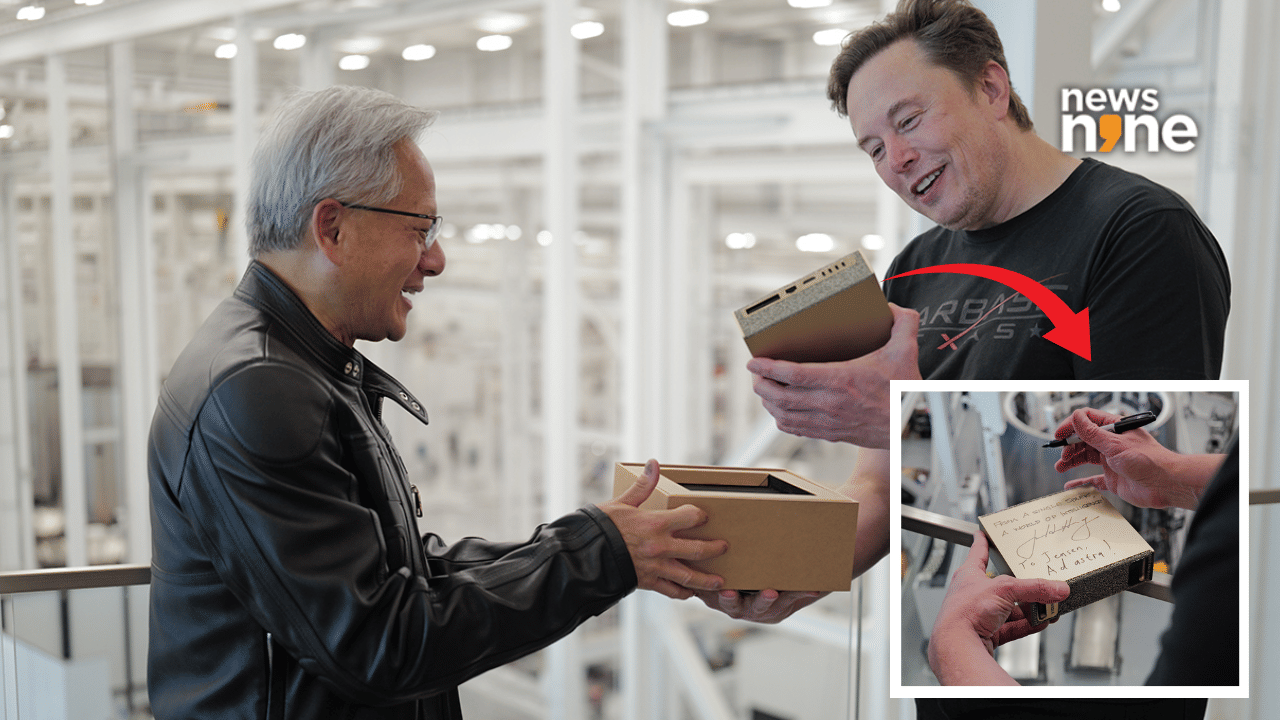New Delhi: NVIDIA CEO Jensen Huang made a symbolic delivery this week , hand-delivering the first DGX Spark unit to Elon Musk at SpaceX’s Starbase facility in Texas. The DGX Spark, priced at $3,999 (around ₹3.5 lakh), is being described as the world’s smallest AI supercomputer, and it marks NVIDIA’s latest attempt to make high-performance AI computing accessible to developers, researchers, and creators.
The meeting between Huang and Musk carried an element of nostalgia. Back in 2016, Huang had personally delivered the first NVIDIA DGX-1 supercomputer to Musk and his team at OpenAI, long before ChatGPT made global headlines. “In 2016, we built DGX-1 to give AI researchers their own supercomputer. I hand-delivered the first system to Elon at a small startup called OpenAI , and from it came ChatGPT, kickstarting the AI revolution,” Huang recalled. “With DGX Spark, we return to that mission , placing an AI computer in the hands of every developer to ignite the next wave of breakthroughs.”
The Spark arrives at Starbase
The delivery took place as SpaceX engineers prepared for the 11th test flight of Starship, the world’s most powerful rocket. Huang walked into the facility past teams of engineers before Musk greeted him casually in the cafeteria, opening snacks for children and chatting with staff.
“Imagine delivering the smallest supercomputer next to the biggest rocket,” Huang quipped during the exchange. The DGX Spark, small enough to fit on a desk, offers the kind of power that once required large data centers , a contrast as striking as Huang’s comment suggested.
The system brings 128GB of unified memory and delivers 1 petaflop of AI performance, enough to run models with 200 billion parameters locally and fine-tune up to 70 billion parameters without relying on cloud infrastructure. It’s powered by NVIDIA’s GB10 Grace Blackwell Superchip, combining GPU and CPU power with NVIDIA ConnectX-7 networking and NVLink-C2C technology, which provides five times the bandwidth of PCIe Gen5.
A supercomputer in the size of a book
Physically, DGX Spark is compact , roughly the size of a hardcover book, weighing about 1.2 kilograms. But inside, it’s packed with NVIDIA’s full AI stack, including CUDA libraries, NVMe storage, and the NVIDIA AI software suite. The company says it’s built for developers who want to run AI locally without sending workloads to remote data centers.
It comes preloaded with NVIDIA tools and models, including NVIDIA NIM microservices and frameworks to customize models like FLUX.1 for image generation or deploy vision-language models such as Cosmos for summarization and search. Huang said Spark enables developers to “create AI agents and run advanced software stacks locally.”
From labs to studios: early users revealed
NVIDIA said companies like Microsoft, Google, Hugging Face, Meta, Anaconda, and Docker are among the early users testing DGX Spark for optimization. Research labs such as NYU’s Global Frontier Lab are already running privacy-sensitive experiments on it. “DGX Spark allows us to access peta-scale computing on our desktop,” said Kyunghyun Cho, professor of computer and data science at NYU. “It enables rapid prototyping and experimentation with advanced AI algorithms and models.”
The company’s hardware partners , including Acer, ASUS, Dell, Lenovo, HP, MSI, and GIGABYTE , are rolling out DGX Spark systems worldwide. It will also be available at Micro Center stores in the U.S. and on NVIDIA.com starting October 15.
Bringing AI power to the desktop
NVIDIA says the DGX Spark represents a new class of AI computer that brings supercomputer-level performance “within arm’s reach.” The idea is to allow smaller startups, researchers, and creative professionals to run large models locally, prototype faster, and reduce reliance on cloud infrastructure that often costs thousands per month.
